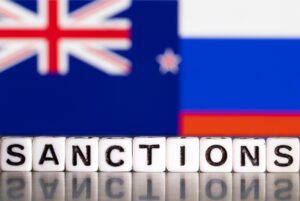
Oil prices picked up a steady pace of growth on Tuesday afternoon on concern due to reduced supply on the market.
The price of November futures for Brent crude on the London ICE Futures exchange by 14:35 Moscow time on Tuesday is $85.11 per barrel, which is $1.05 (1.25%) higher than the price at the close of the previous session.
The price of futures for WTI oil for November in electronic trading on the New York Mercantile Exchange (NYMEX) rose by this time by $0.91 (1.19%), to $77.62 per barrel.
Traders are monitoring the situation in the Gulf of Mexico in connection with the growing strength of Hurricane Yan. The US National Hurricane Center expects Yan to reach Florida by the middle of this week.
Chevron Corp. announced the suspension of two production platforms in the Gulf of Mexico due to the hurricane. The total volume of oil production from these two platforms is about 120,000 barrels per day.
British BP also intends to close two platforms in the region, each of which produces more than 100 thousand barrels per day.
In addition, the market takes into account that the OPEC + countries may cut oil production levels in order to spur price increases. Representatives of the association have repeatedly stated this before.
“I think OPEC will have to do this at some point in order to cut supply and push prices up,” said Gary Ross, head of Black Gold Investors.
In order to keep prices at $90 per barrel, OPEC will need to cut production by 1 million b/d, according to Ross’s calculations. In the meantime, OPEC + can cut production by at least 500 thousand b / d, according to UBS.
Meanwhile, the supply of petroleum products may be limited in France. The TotalEnergies refinery in Feisen will remain closed until at least mid-October, French trade union CGT said. The plant, which produces up to 40% of oil products in France, has been closed since September 16 due to technical problems.
In addition, two other TotalEnergies refineries in Fos-sur-Mer and Port-Jerome-Gravenchon have been closed since last week due to a workers’ strike.

US-based Development Finance Corporation (DFC, formerly OPIC), an agency of the US federal government, has announced its readiness to lend to Ukrainian businesses within individual projects in amounts ranging from $1 million to $1 billion each, Deputy Economy Minister of Ukraine Oleksandr Hryban said.
“The DFC agency is ready to lend to projects in Ukraine for amounts from $1 million to $1 billion. For the sake of Ukraine, they made an exception and are ready to issue loans even if an American investor is not represented in Ukrainian business,” he said.
At the same time, this information is not yet available on the DFC website. The press release of the corporation says that its head Scott Nathan within the framework of the 77th UN General Assembly last week joined a meeting chaired by President of Poland Andrzej Duda and with the participation of Prime Minister of Ukraine Denys Shmyhal. At the meeting, representatives of Polish and Ukrainian business circles discussed efforts to restore the Ukrainian economy in light of the devastation caused by Russia’s unprovoked war.
According to Hryban, DFC is ready to support Ukraine with several different financial instruments, in particular, to provide coverage for credit risks, including political and war ones.
In addition, the official added that DFC is ready to issue free financial grants to those companies that are recognized as promising, but which have not yet passed an international financial audit.

The New Zealand government has expanded sanctions against key Russians amid Russia’s full-scale aggression against Ukraine, the Australian Associated Press reports.
On Tuesday, New Zealand’s Foreign Minister Nanaia Mahuta announced that 19 new “members of Putin’s inner circle” would be subject to financial and travel sanctions as part of coordinated global action.
“Ukraine has been clear that the most important action we can take to help them are our ongoing sanctions and supporting them through the conflict, as we continue to do,” she said.
At the moment, the sanctions apply to about 1,000 people.
In turn, New Zealand Defense Minister Peeni Henare noted that there is no opportunity to provide military assistance yet, since Ukraine’s requests do not coincide with the resources that are available. At the same time, Henare stressed that New Zealand is ready to provide additional assistance if Ukraine’s needs match its reserves.

The dollar continues to decline against the euro, yen and pound sterling on Tuesday after a steady rise in previous trading.
The ICE-calculated index, which shows the dynamics of the dollar against six currencies (the euro, the Swiss franc, the yen, the Canadian dollar, the pound sterling and the Swedish krona), is losing 0.5% in the course of trading. On the eve of the indicator has updated a 20-year high.
The recent rise in the dollar has created an “unacceptable situation” for risky assets that tends to lead to financial or economic crises, said Morgan Stanley strategist Michael Wilson, quoted by MarketWatch.
The euro/dollar pair is trading at $0.9642 as of 3:00 pm compared to $0.9609 at the close of the previous session. On the eve of the euro has fallen in price against the dollar by 0.8%.
The pound sterling rose during trading to $1.0796 compared to $1.0688 the day before. The dollar against the yen fell to 144.47 yen against 144.74 yen in the previous session. On Monday, the US currency gained 1.5% against the pound and 1% against the yen.
The dollar is correcting as investors seek to take profits after its significant strengthening, according to Trading Economics. Experts believe that the US currency will continue to strengthen against the background of the rapid tightening of monetary policy by the Federal Reserve System (FRS). In addition, the dollar is supported by a decrease in risk appetite in world markets.
A further increase in volatility in financial markets will help strengthen the dollar due to its status as a “safe haven” currency, said Carol Kong, an analyst for the CBA foreign exchange market.

The bitcoin exchange rate exceeds $20,000 during trading on Tuesday, having reached a maximum value in more than a week, but cannot break through the narrow trading range indicated after the cryptocurrency’s sharp fall this summer.
The price of bitcoin, as of 13:40 Kyiv time, rose by 5.69% compared to the closing level of previous trading and amounted to $20.223 thousand.
Bitcoin has been fluctuating between $18,000 and $25,000 since mid-June, following a crash in the crypto market that has depreciated nearly $2 trillion since its peak in November last year, CNBC writes.
The decline in the market was caused by an increase in interest rates by the central banks of the world, aimed at combating high inflation, and a wave of bankruptcies and debt problems that swept through companies in the cryptocurrency sector.
Crypto investors are keeping an eye on changes in monetary policy as cryptocurrencies have been closely linked to the US stock market this year. Rising interest rates put pressure on the S&P 500 and Nasdaq, which spilled over to other risky assets, including cryptocurrencies.
This time, the rise in the cryptocurrency market, which began on Monday, is at odds with the dynamics of the stock market. American stocks continued to fall on Monday, and the Dow Jones Industrial Average ended trading in the bearish trend zone (that is, it fell 20% or more from the last peak) for the first time since the start of the coronavirus pandemic.
However, futures for US indices showed an increase on Tuesday, indicating that stocks may start to win back on the mood of investors to buy on the fall.
The rate of Ether (Ether) rose by 4.79% to $1388.50. On September 15, a cryptocurrency software update dubbed The Merge was activated. The update switched the Ethereum blockchain to a new algorithm, which should drastically reduce the consumption of electricity during mining.

Over 340,000 doses of influenza vaccines will be delivered to Ukraine in the current epidemiological season, Mikhail Radutsky, head of the parliamentary committee for the nation’s health, medical care and medical insurance, said.
In his Telegram channel on Tuesday, he specified that the Ministry of Health had reached an agreement with partners on the supply of 163,000 doses of the Vaxigripp vaccine from Sanofi as humanitarian aid and 30,000 doses of this vaccine as part of the PIVI project. In total, 193,000 doses of flu vaccines will be delivered to the country as aid.
In addition, according to Radutsky, in the current epidemiological season, 150,000 doses of the vaccine will be delivered to the private market of Ukraine – 100,000 GisiFlu and 50,000 Vaxigripp.
“Last year, more than 1 million doses of flu vaccines were purchased on the private market. This year, 150,000 doses are expected to be delivered. But if there is demand, I think private companies will buy more,” he added.
Radutsky also said that the Vaxigripp vaccine has already arrived at some pharmacies. At the same time, its cost is almost the same as last year – 300-400 UAH.
According to the estimates of the Ministry of Health, 4.7 million Ukrainians are recommended to be vaccinated against influenza for health reasons and medical indicators. Due to martial law and limited funding for public procurement, the critical need for vaccination of risk groups is set at 250,000 doses.
The risk group includes doctors, the Armed Forces of Ukraine, the Ministry of Internal Affairs, the Security Service of Ukraine and pregnant women. They, according to applications from family doctors, if they wish, will be able to receive a flu shot free of charge.